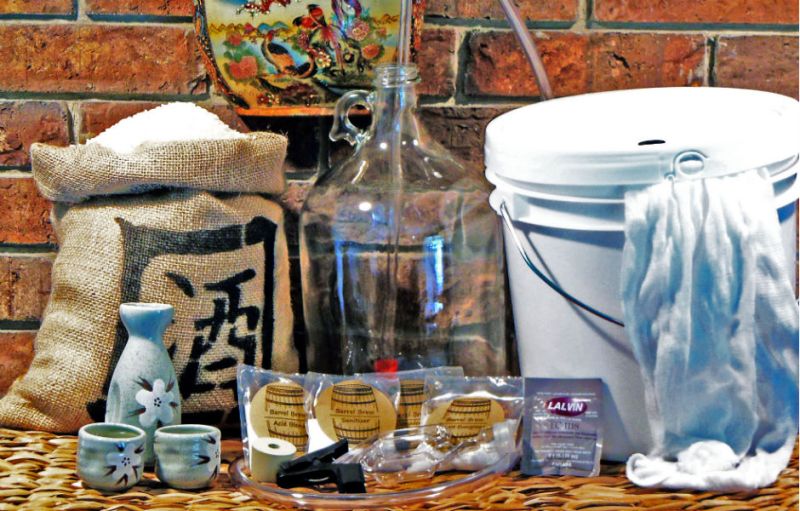
You’ve concocted a beer making kit, a wine making kit and a mead making kit. Why sake?
I’m a sake fan through and through. When you say the word ‘sake,’ it conveys so much more meaning than just ‘alcohol’ or ‘rice wine,’ it’s a packaged word that brings with it centuries of tradition, culture, art and a nuance of flavor that is easily the equal of any other wine or beer. Buying and drinking sake is great, but I wanted to be a part of the greater experience and I figured the best way to do that would be to make my own. I was disappointed though when I looked in stores and online as the little I found required the purchase of expensive equipment and expected a strong base of knowledge about the sake making process. Frustrated, I decided to apply my own home brewing experience and use my own tools to make sake. Through this experience the sake kit was born.
How did you get into home brewing?
Home brewing is a long-standing tradition on both sides of my family. Family dinners and lunches were often planned around the making of a batch of wine or beer and a lot fond memories were created during that time. Home brewing at its core is a social tradition that brings people together and I believe that’s why it stuck with me into adulthood when I was able to make my own batches. Sharing recipes, tips and knowledge is always exciting for me because it’s like I’m sharing a bit of myself, my family and my past.
How did you figure out the right recipe to brew sake at home?
Figuring out the right recipe was a long process of research and a whole lot of trial and error that involved quite a few friends and tastings. I wanted to create an easy and approachable recipe that would help ignite the passion of sake home brewing in whoever tried the kit. The sake kit is meant to be a first-step introduction that will hopefully give someone the confidence to dive into the process in as complicated and nuanced a manner as they want.
How long does it take before you can enjoy your first glass of sake?
Sake is just like a traditional grape wine in that it is difficult to say when it is best to try your first glass. After about four weeks you can have a small glass of the sake and in fact I would recommend it because that tasting serves as a baseline for how the flavor changes throughout the brewing process. Much in the same way as a newly made grape wine will taste differently than the same wine if allowed to age, the sake at four weeks will taste differently than that same sake after it has been allowed to condition in its bottle for a bit more time.
Do you have any tips for optimum brewing?
I always try to remind myself of two things when I’m brewing anything; have patience and sanitize, sanitize, sanitize. It’s difficult to resist stopping the process early and just drinking the sake. Just remember that the finished product will taste much better! Every kit has an ample amount of sanitizer included; don’t be afraid to use it. Sanitizing everything before it comes in contact with your batch will prevent foreign agents from ruining and souring your sake. Nothing is more disappointing than waiting weeks for you home brew to finish only to have it ruined and soured.
What’s the best way to enjoy the finished product?
Warm and in sake cups with friends! Of course you don’t have to buy sake cups or even warm it to enjoy it but to me it adds to the experience.
What kind of kit are you making next?
I have a number of exciting cider recipes that I have been perfecting so a cider kit is probably next on the radar!
Sake Making Kit, $57 at etsy.com.
Editors' Recommendations
- An easy egg bites recipe to rule them all: How to make your own Starbucks egg bites
- Out of brown sugar? Here’s how to make your own
- Embrace your inner basic bro: Learn how to make your own pumpkin spice
- How To Make Your Own Herbes de Provence, An Essential Spice Blend
- These Homebrewing Appliances And Kits Are the Easiest Way to Make Your Own Beer


